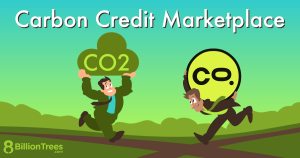Carbon Credit Exchange Trading Work
As the world faces an increasingly urgent climate crisis, carbon credits are gaining popularity as a tool to lower emissions and comply with mandatory greenhouse gas regulations. Carbon credit exchanges provide a platform to buy and sell standardized, market-based carbon contracts that can be traded on an established commodities trading framework. These platforms are especially attractive to businesses, investors, stockbrokers, and other players who need a secure way to conduct carbon transactions without exposing themselves to counterparty risk.
There are two main markets for carbon credit exchange: regulated and voluntary. Regulated markets are run by governments around the world and allow companies to purchase credits in order to meet their carbon emission targets, or offset their actual emissions against a forecast of future emissions. For example, the European Union has its Emissions Trading System (ETS), and California operates a similar program that is part of a larger regional cap-and-trade conglomerate.

Carbon credits are derived from carbon-reducing projects such as reforestation, energy efficiency improvements, and landfill gas capture. The underlying emissions reductions are verified by accredited independent third parties. These verifiers use a rigorous process to verify that the projects are actually reducing emissions, and the resulting credits can then be sold on the market.
How Does Carbon Credit Exchange Trading Work?
The primary buyers of carbon credits are companies that need to offset their own emissions in order to meet regulatory requirements or to pursue a net-zero emission goal. They can also be individuals who want to offset their travel emissions, or even just make a contribution to an environmental cause of their choice. These buyers can then sell their credits to a wider market of individuals and organizations who are looking for ways to reduce their own emissions.
Credit prices are influenced by a variety of factors, including the type of underlying project, its geographic location, its vintage (the older the project is the cheaper it is), and whether or not the project provides additional co-benefits that help meet some of the UN’s Sustainable Development Goals. Buyers can match their specific requirements to the available inventory of credits by negotiating with multiple suppliers through an over-the-counter transaction.
One challenge facing the regulated and voluntary carbon markets is that there are few standardized attributes for credits. This is due to the fact that many different projects have been developed and implemented, with each relying on its own set of rules for verification and certification. The development of a core set of carbon attributes, hosted and curated by an independent, third-party organization, could enable the creation of liquid reference contracts that would provide a daily price signal. This would help support the growth of supplier financing and lead to a more streamlined over-the-counter trading process.
There is a level of overlapping in the carbon market that is unique from other markets, with several actors playing both brokering and financing roles. For example, some carbon brokers act as project developers in addition to their normal brokerage activities. Similarly, some of the largest end-buyers also fund and operate their own carbon projects, which they then sell to other customers.